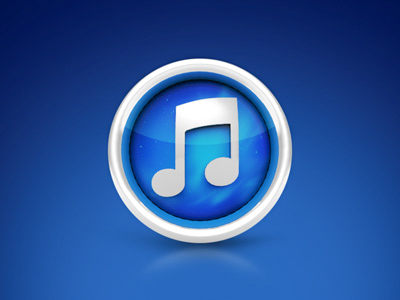

Follow these guidelines to make sure you’re using the iTunes lockup correctly. The iTunes Store lockup is a promise to your audience of a high-quality entertainment experience. Whenever a lockup is used online, you must include a link to the iTunes Store. The lockup is especially suited to banner ads, print ads, and other forms of advertising. The lockup is designed for greater graphic versatility and can be used on layouts where the iTunes Store badge is either crowded by limited layout space or appears visually heavy in the layout. If badges from other services appear on your communication, do not use a lockup. Use only lockup artwork provided by Apple and do not alter the artwork in any way.Ī lockup can be used in all marketing communications promoting content on iTunes. If using the Ad-Hoc method of delivering the app (either for corporate users or for beta testing on real devices), the developer also needs to include a 512x512 and a 1024x1024 image that will be used to represent the app in iTunes.The iTunes Store lockup is a combination of the iTunes Store icon and type with a call-to-action message - “Get it on,” “Buy on,” or “Pre-order on” iTunes Store - set in specially designed type. This is the preferred method of including and managing image assets that will be used to provide Application, Spotlight and Settings icons for an app. Under the Properties Explorer the developer can select the different types and sizes of icons required.Ĭlick on given icon type and select an image file for the required type/size. If there is no button, but instead a drop-down list, then an Asset Catalog has already been added to this project.įrom the Solution Explorer, expand the Asset Catalog folder:ĭouble-click the Media file to open it in the editor: ** file in the Solution Explorer:Ĭlick on the Visual Assets tab and click on the Use Asset Catalog button under App Icons: Select AppIcon from the list of assets to display the Icon Editor:Įither click on given icon type and select an image file for the required type/size or drag in an image from a folder and drop it on the desired size.Ĭlick the Open button to include the image in the project and set it in the xcasset.ĭouble-click the **Info. To use an Asset Catalog, follow these steps:ĭouble-click the ist file in the Solution Explorer to open it for editing.Ĭlick the Migrate to Asset Catalog button:įrom the Solution Explorer, double-click the Assets.xcassets file to open it for editing:
#ITUNES APP ICON GENERATOR FOR MAC#
A special editor in Visual Studio for Mac allows the developer to include and setup these images graphically. All version of the image required to support all resolutions are included in the xcasset and grouped together. Only supported with Asset Catalog Image Sets.įor more information about icons, please see Apple's Icon and Image Sizes documentation.įor icons, a special AppIcon image set can be added to the Assets.xcassets file in the app's project.Uses the same size icons as the iPhone.Uses the same images and sizes as the Spotlight Icon.iOS 7 & 8 use the same image sizes as iOS 5 & 6.Setting a 1x image for iOS 7 is not supported when using Asset Catalogs.Both Visual Studio for Mac and Xcode no longer support setting 1x image for iOS 7.
IPhone: iOS 9 & 10 (iPhone 6 & 7 Plus) Icon The following image asset sizes and resolutions will be needed to support all of the icon types required by an Xamarin.iOS app targeting iOS 5 through iOS 9 (or greater): iPhone Icon Sizes Settings Icon - If the user enters the Settings app on their iOS device, this icon will be displayed at the end of the Settings list for the app. Spotlight Icon - Whenever the user enters the name of an app in a Spotlight Search, this icon is displayed. Additionally, this icon is used by Game Center, if applicable. This is the icon that the user will tap from the iOS home screen to launch the app. The following screenshots from an iPad illustrates the three uses of icons in iOS:Īpplication Icon - Every iOS app must define an application icon. In the same way that a Xamarin.iOS app can use image assets for UI controls and as document icons, image assets can be used to provide Application Icons. iTunes Artwork - Supplying the required iTunes Artwork for the Ad-Hoc method of delivering your application.Īpplication, Spotlight, and Settings Icons.Managing Icons with Asset Catalogs - Managing application icons using Asset Catalogs.Application, Spotlight and Settings Icons - The different types of icons required for an iOS app.The following topics will be covered in detail:


 0 kommentar(er)
0 kommentar(er)
